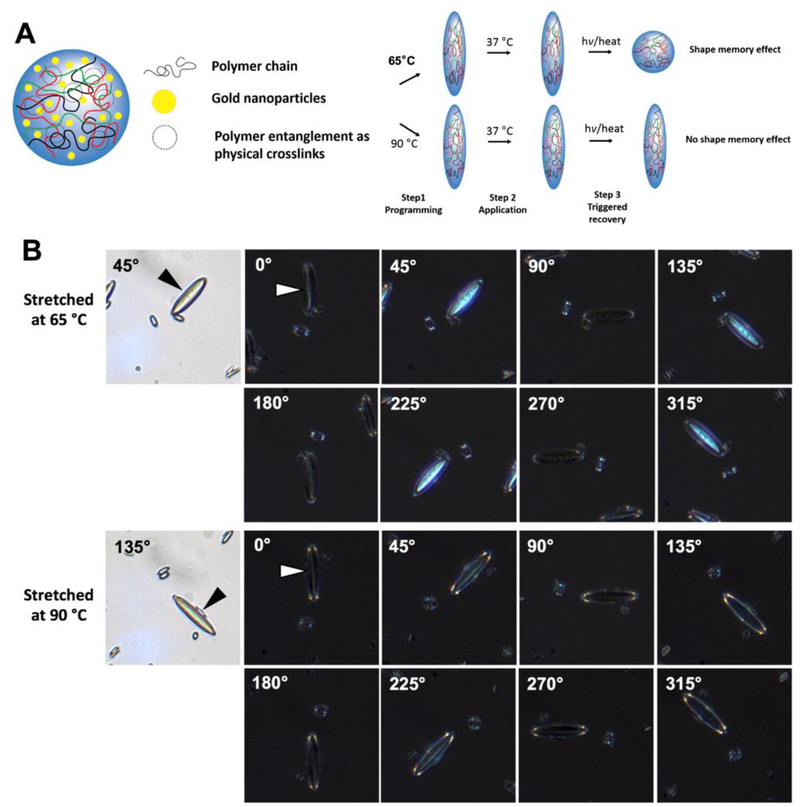Figure 1.
Polymeric particle entropy-driven shape memory effect. (A) Poly (D,L lactic acid) particles were fabricated encapsulating hydrophobic lipid stabilized gold nanoparticles. Due to high molecular weight of the polymer in use, physical crosslinks of the polymer were present in the sample. Polymeric particles are stretched to anisotropic shapes under low or high temperatures and then the entropy driven shape memory effect was triggered by thermal means. Low temperature stretched particles assumed their original shape whereas high temperature stretched particles did not. (B) Polymer alignment was observed in POM images of 65 °C stretched particles to a higher degree as opposed to 90 °C stretched particles. This indicates that polymer orientation between polymer entanglements maintained in the low-temperature stretched particles, which can serve as driving force to trigger shape memory effect, while disentanglement of polymers happened and polymer orientation were lost in the high-temperature stretched particles.

